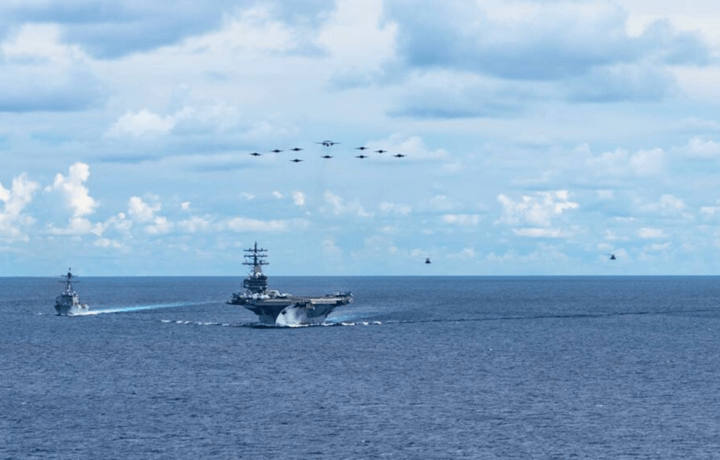When the U.S. and Japan completed bilateral navy training exercises in the South China Sea on June 23, it did not go unnoticed by Beijing. China has interpreted the training as a direct provocation in their backyard. In the weeks since, the South China Sea has become an arena of military showmanship, and the growing number of forces has outdone calls to ease tensions.
HAWAIIAN Testing Zone in the South China Sea
Japanese and American forces have increased their numbers, and the region has become a primary testing zone for the countries’ respective autonomous air and naval forces. U.S. Special Operations Command is at the forefront of the testing in Hawaii. Two SEAL mini subs (22-foot SEAL Delivery Vehicle Mark 11’s) are undergoing launch and recovery tests off the Hawaiian coast. Also known as the Shallow Water Combat Submersible, the raft is “specifically designed to insert and extract Special Operations Forces in high-threat areas,” says its builder Teledyne Brown Engineering.
The timing and location of this training are relevant to the tensions in the South China Sea. “The National Defense Strategy is clear: We’ve got to build a more lethal force,” said Army Gen. Richard Clarke, head of Special Operations Command. “We have to continue to foster our allies and grow more partners and we’ve got to reform; in the case of SOCOM we’ve got to reform to meet those threats.”
Different Threats Brings Different Military Responses
While the U.S. is a world leader in military prowess, much of its recent military conflict has taken place against small enemies in the deserts of the Middle East. Logistically, a conflict over the South China Sea would prove a much different threat, and tensions have put the pressure on the Pentagon to adapt to those threats.
The Air Force responded to this challenge on Saturday. Taking off from Louisiana, a B-52 Stratofortress flew halfway across the world to join two U.S. carriers in the South China Sea.
“Back home we would celebrate the Fourth by launching fireworks,” Yeoman 2nd Class Chareese Knox, assigned to one of the carriers, said in a statement on Saturday, “but nothing celebrates freedom like launching fighter jets from the middle of the ocean at night.”
Training Exercises Increase Tensions in International Waters
The 28-hour mission served to demonstrate that the U.S. has the ability to “rapidly deploy to a forward-operating base and execute long-range strike missions,” said PACAF squadron commander Lt. Col. Christopher Duff. The flight was undoubtedly a further show of force to China, who called the exercise a mere flex of military muscle out of “totally ulterior motives.” The attitude of the White House to China has only mirrored the rising tensions over the Pacific.
In recent weeks, the tactical exercises over the South China Sea are part of an ongoing military buildup on both sides. U.S. carriers and ships are often shadowed by Chinese submarines with both sides taking note of what they can from the other’s tactics. The U.S. maintains its right to be in international waters, but as Beijing continues to claim much of the South China for itself, the rising U.S. presence is sure to heat up already rising tensions.




